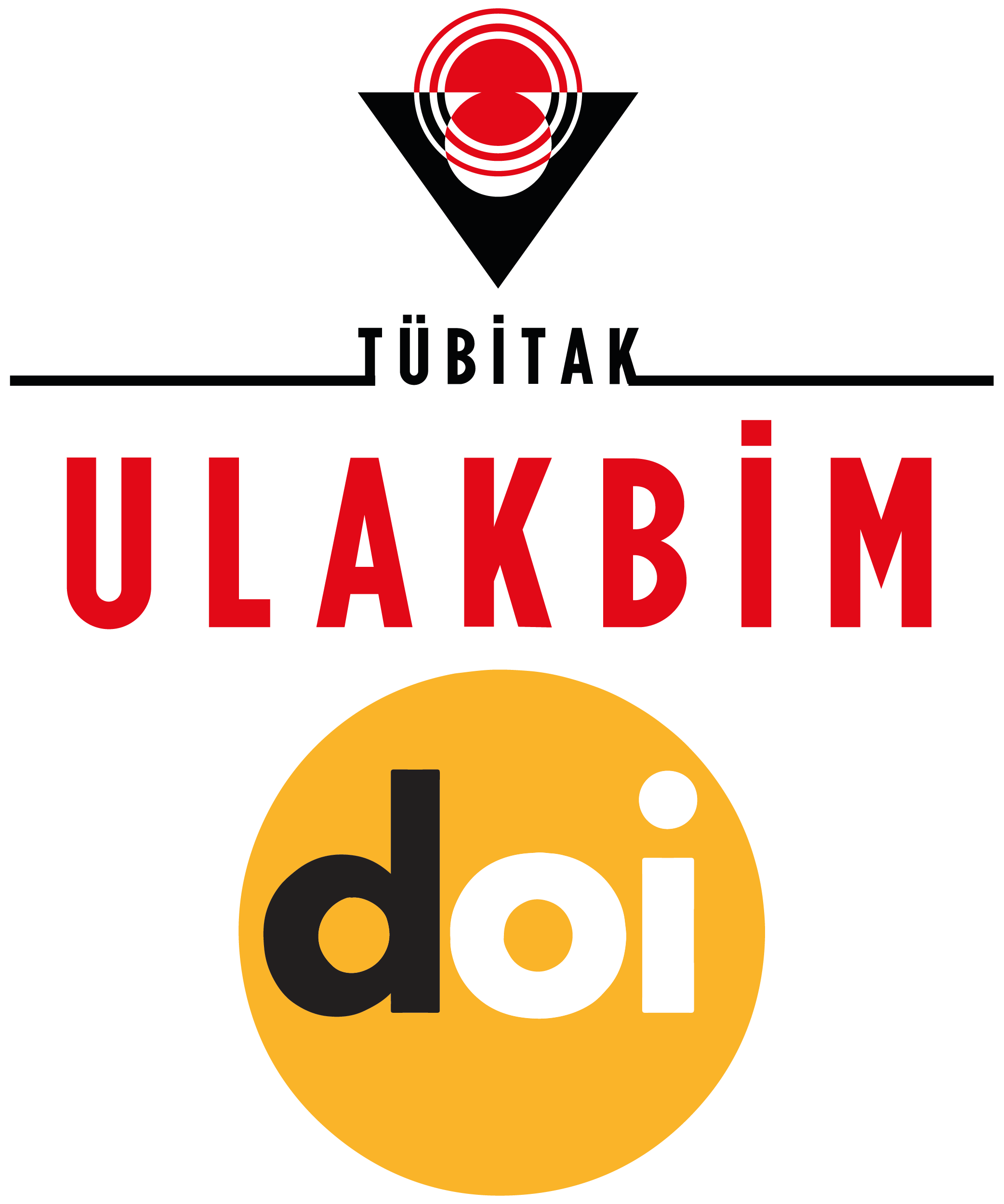Place Image of Residents: Role of Perception of Tourism Impacts
DOI:
https://doi.org/10.21325/jotags.2020.628Keywords:
Place image, Tourism impacts, Perception, AlanyaAbstract
The aim of this study is to determine the role of tourism impacts in the perception of the place image of local people in Alanya, a mature destination. There are many studies on the place image in the relevant literature. In these studies, residents’ place image perceptions were neglected. Unlike previous studies, this study deals with the effects of tourism and place image in terms of local people. In the present study, residents’ place image perceptions measured through validated previous developed scale. Convenience sampling method was used and 319 data collected from self-developed questionaires used for the analysis. Research model was tested via Partial Least Squared-Structural Equation Modelling (PLS-SEM) technique. Findings indicated that local people perception of tourism economic positively impact atmosphere and socio-economic environment/infrastucture dimensions of cognitive image. Local people perception of environmental impacts negatively affects natural environment. Moreover, perception of social and cultural impacts of tourism negatively affect cultural environment and infrastructure/socio-economic environment dimensions of cognitive image. Lastly, local people perception of social and cultural impacts negatively affects the affective image.
References
Agapito, D., Mendes, J., & Valle, P. (2010) Destination Image: Perspectives of tourists versus residents. European Journal of Tourism Hospitality and Recreation, 1(1), 90-109.
Alcaniz, E. B., García, I. S., & Blas, S. S. (2009). The functional-psychological continuum in the cognitive image of a destination: A confirmatory analysis. Tourism Management, 30(5), 715-723.
ALTSO Economic Report, (2015). (Chambers of Commerce and Industry of Alanya), www.altso.org.tr/yayinlarimiz/alanya-ekonomik-rapor/alanya-ekonomik-rapor-2016/
Andereck, K. L., Valentine, K. M., Knopf, R. C., & Vogt, C. A. (2005). Residents’ perceptions of community tourism impacts. Annals of Tourism Research, 32(4), 1056-1076.
Andereck, K. L., & Nyaupane, G. P. (2011). Exploring the nature of tourism and quality of life perceptions among residents. Journal of Travel Research, 50(3), 248-260.
Andereck, K. L., & Vogt, C. A. (2000). The relationship between residents’ attitudes toward tourism and tourism development options. Journal of Travel research, 39(1), 27-36.
Ap, J., & Crompton, J. L. (1993). Residents' strategies for responding to tourism impacts. Journal of Travel Research, 32(1), 47-50.
Baloglu, S., & McCleary, K. W. (1999). A model of destination image formation. Annals of tourism research, 26(4), 868-897.
Beerli, A., & Martin, J. D. (2004). Factors influencing destination image. Annals of Tourism Research, 31(3), 657-681.
Beeton, S. (2007). The good, the bad and the ugly: CSR, film and tourism. Two cases of filming in a small community. Tourism Review International, 11(2), 145-154.
Boo, S., Busser, J., & Baloglu, S. (2009). A model of customer-based brand equity and its application to multiple destinations. Tourism Management, 30(2), 219-231.
Bramwell, B., & Rawding, L. (1996). Tourism marketing images of industrial cities. Annals of Tourism Research, 23(1), 201-221.
Butler, R. W. (1980). The concept of a tourist area cycle of evolution: Implications for management of resources. The Canadian Geographer, 24(1), 5-12.
Byrd, E. T., Bosley, H. E., & Dronberger, M. G. (2009). Comparisons of stakeholder perceptions of tourism impacts in rural eastern North Carolina. Tourism Management, 30(5), 693-703.
Chandralal, K.P.L. (2010). Impacts of tourism and community attitude towards tourism: A case study in Sri Lanka. South Asian Journal of Tourism and Heritage, 3(2), 41-49.
Chang, T. C., & Yeoh, B. S. (1999). New Asia–Singapore: communicating local cultures through global tourism. Geoforum, 30(2), 101-115.
Cheong, S. M., & Miller, M. L. (2000). Power and tourism: A Foucauldian observation. Annals of Tourism Research, 27(2), 371-390.
Choi, H. C., & Sirakaya, E. (2005). Measuring residents’ attitude toward sustainable tourism: Development of sustainable tourism attitude scale. Journal of Travel Research, 43(4), 380-394.
Cohen, J. (1988). Statistical power analysis for the behavioral sciences (2nd Edition). Hilsdale: Lawrence Erlbaum.
Davis, D., Allen, J., & Cosenza, R. M. (1988). Segmenting local residents by their attitudes, interests, and opinions toward tourism. Journal of Travel Research, 27(2), 2–8. https://doi.org/10.1177/004728758802700201
de Kadt, E. (1979). Tourism-passport to development?: Perspectives on the social and cultural effects of tourism in developing countries. New York: Oxford University Press.
Dedeoğlu, B. B., Balıkçıoğlu, S., & Küçükergin, K. G. (2016). The role of touristsʼ value perceptions in behavioral intentions: The moderating effect of gender. Journal of Travel & Tourism Marketing, 33(4), 513-534.
Dedeoglu, B. B., Bilgihan, A., Ye, B. H., Buonincontri, P., & Okumus, F. (2018). The impact of servicescape on hedonic value and behavioral intentions: The importance of previous experience. International Journal of Hospitality Management, 72, 10-20.
Diedrich, A., & García-Buades, E. (2009). Local perceptions of tourism as indicators of destination decline. Tourism Management, 30(4), 512-521.
Echtner, C. M., & Ritchie, J. B. (1991). The meaning and measurement of destination image. Journal of Tourism Studies, 2(2), 2-12.
Eshliki, S. A., & Kaboudi, M. (2012). Community perception of tourism impacts and their participation in tourism planning: A case study of Ramsar, Iran. Procedia-Social and Behavioral Sciences, 36, 333-341.
Faulkner, B., Chalip, L., Brown, G.., Jago, L., March, R.., & Woodside, A. (2001). Monitoring the tourism impacts of the Sydney 2000 Olympics. Event Management, 6(4), 231-246.
Fornell, C., & Larcker, D. F. (1981). Evaluating structural equation models with unobservable variables and measurement error. Journal of Marketing Research, 18(1), 39-50.
Freire, J. R. (2009). Local People’a critical dimension for place brands. Journal of Brand Management, 16(7), 420-438.
Fun, F. S., Chiun, L. M., Songan, P., & Nair, V. (2014). The impact of local communities’ involvement and relationship quality on sustainable rural tourism in rural area, Sarawak. The moderating impact of self-efficacy. Procedia-Social and Behavioral Sciences, 144, 60-65.
Gallarza, M. G., Saura, I. G., & Garcı́a, H. C. (2002). Destination image: Towards a conceptual framework. Annals of Tourism Research, 29(1), 56-78.
García, F. A., Vázquez, A. B., & Macías, R. C. (2015). Resident's attitudes towards the impacts of tourism. Tourism Management Perspectives, 13, 33-40.
Gertner, D., & Kotler, P. (2004). How can a place correct a negative image?. Place Branding, 1(1), 50-57.
Gilbert, D., & Clark, M. (1997). An exploratory examination of urban tourism impact, with reference to residents attitudes, in the cities of Canterbury and Guildford. Cities, 14(6), 343-352.
Gursoy, D., Jurowski, C., & Uysal, M. (2002). Resident attitudes: A structural modeling approach. Annals of Tourism Research, 29(1), 79-105.
Gursoy, D., & Rutherford, D. G. (2004). Host attitudes toward tourism: An improved structural model. Annals of Tourism Research, 31(3), 495-516.
Gursoy, D., Chi, C. G., & Dyer, P. (2010). Locals’ attitudes toward mass and alternative tourism: The case of Sunshine Coast, Australia. Journal of Travel Research, 49(3), 381-394.
Published
How to Cite
Issue
Section
License
Copyright (c) 2023 Journal of Tourism & Gastronomy Studies

This work is licensed under a Creative Commons Attribution-NonCommercial 4.0 International License.








